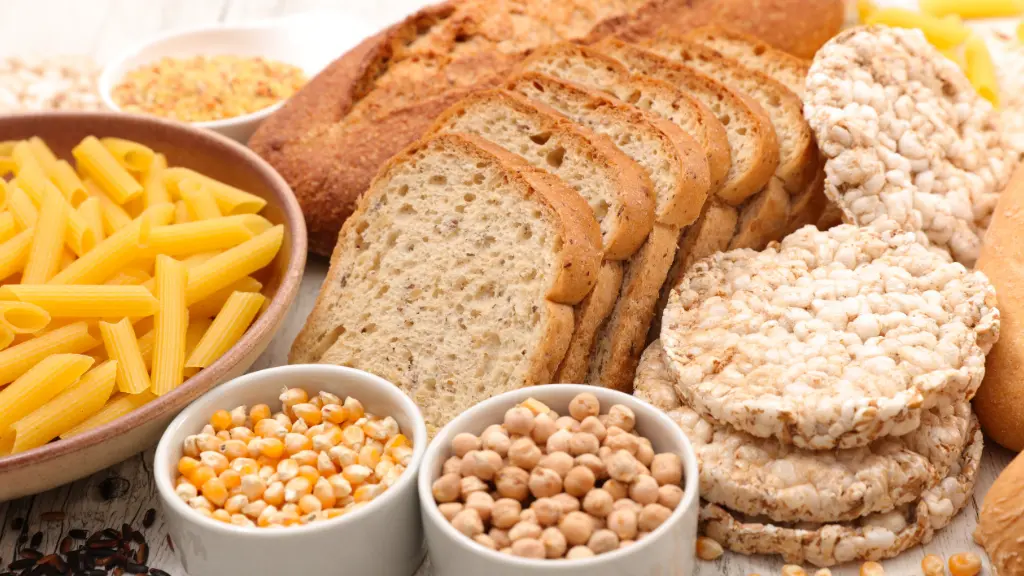In recent years, gluten-free bread has gained popularity, especially among people with celiac disease, gluten intolerance, or those simply opting for a gluten-free lifestyle.
But is gluten-free bread inherently healthier than regular bread? The answer depends on several factors, including your health needs, dietary goals, and the specific types of bread you’re comparing.
Gluten-free bread is often marketed as a healthier alternative, but it’s essential to examine its nutritional content and how it compares to traditional bread. In this article, we will break down the differences between gluten-free and regular bread, explore the potential health benefits and drawbacks of both, and help you decide which might be best for you.
You May Also Like: Why Do Women Gain Belly Fat in Midlife?
What is Gluten-Free Bread?
Gluten-free bread is made without wheat or any other gluten-containing grains, like barley or rye. Instead, gluten-free bread is typically made from a variety of alternative flours, such as rice flour, almond flour, coconut flour, or gluten-free oat flour.
Gluten is a protein found in wheat and some other grains that gives bread its chewy texture. For individuals with celiac disease, gluten can cause severe reactions, damaging the intestines and leading to digestive problems. For those with non-celiac gluten sensitivity, consuming gluten can lead to uncomfortable symptoms like bloating, headaches, and fatigue.
Nutritional Comparison: Gluten-Free Bread vs. Regular Bread
When it comes to overall health, the nutritional quality of the bread you consume is just as important as whether or not it contains gluten. Let’s compare the key aspects of both types of bread.
1. Calories
Generally, regular wheat bread and gluten-free bread contain a similar number of calories per slice. However, gluten-free bread can sometimes be slightly higher in calories because it may include alternative ingredients like rice flour, which can be more calorie-dense.
If you’re watching your calorie intake, be sure to check the label and portion sizes, as some gluten-free breads can be higher in calories than traditional wheat bread.
2. Fiber Content
Fiber is essential for digestive health, and it plays a key role in regulating blood sugar levels and keeping you full longer. Most regular whole wheat bread offers a good amount of fiber, especially if it’s made from whole grains.
Gluten-free bread, on the other hand, can be lower in fiber, depending on the types of flours used. For example, bread made from rice flour or potato flour may not have as much fiber as whole wheat bread. However, some gluten-free breads are fortified with additional fiber to make up for this.
If you’re looking for a high-fiber option, be sure to check the ingredients list. Some gluten-free breads include added fiber from sources like flaxseed, chia seeds, or psyllium husk.
3. Vitamins and Minerals
Both regular and gluten-free breads can provide important vitamins and minerals, including iron, folic acid, and B vitamins. However, gluten-free bread often requires additional fortification, as many of the alternative flours used are not naturally enriched with these nutrients.
For example, whole wheat bread is typically rich in B vitamins like niacin, thiamine, and riboflavin, which are essential for energy production and overall metabolic health. Gluten-free breads made from rice or potato flour may need extra nutrients to match the nutritional profile of regular bread.
4. Sugar and Additives
In general, bread—whether gluten-free or not—shouldn’t be excessively sugary. However, many commercial gluten-free breads contain added sugars and artificial additives to improve flavor and texture. This is often necessary because gluten-free breads can be denser and less flavorful without these ingredients.
On the other hand, regular bread—especially white bread—can also contain added sugar and preservatives, but whole grain options tend to have fewer unnecessary additives.
When shopping for gluten-free bread, read the ingredient list to check for any added sugars or preservatives. Opt for gluten-free options that use whole grains and minimal additives for a healthier choice.
The Health Benefits of Gluten-Free Bread
While gluten-free bread isn’t automatically “healthier” than regular bread, it can offer certain benefits, particularly for people with specific health concerns.
1. Good for People with Celiac Disease or Gluten Sensitivity
For individuals with celiac disease or non-celiac gluten sensitivity, gluten-free bread is a must. Consuming gluten can cause severe health issues, including gut damage, inflammation, and digestive discomfort. For these individuals, gluten-free bread is not only a safer option, but it’s also necessary for maintaining their health and well-being.
2. Better for People with Gluten Intolerance
Some people experience digestive issues or discomfort after eating gluten-containing foods. Symptoms of gluten intolerance can include bloating, gas, fatigue, and headaches. For these individuals, gluten-free bread may be an excellent option for reducing these symptoms.
However, it’s important to note that gluten intolerance is different from celiac disease. People who are simply sensitive to gluten, but not intolerant, may still be able to enjoy regular bread in moderation without experiencing any issues.
3. Variety in Diet
For those who avoid gluten for non-medical reasons, gluten-free bread can offer variety. If you’ve been following a gluten-free diet for health or dietary reasons, it’s important to incorporate a variety of gluten-free grains and flours into your meals. Gluten-free bread made from ingredients like quinoa, brown rice flour, and buckwheat can introduce new nutrients and textures to your meals.
The Potential Drawbacks of Gluten-Free Bread
While gluten-free bread can offer benefits, there are some potential drawbacks to consider as well.
1. Higher in Processed Ingredients
Some gluten-free breads are more processed than their regular counterparts. This is due to the need to replace the gluten in traditional bread, which gives it structure and texture. To compensate, gluten-free bread often contains additional binders and fillers, such as xanthan gum, guar gum, or potato starch, which may not be ideal for everyone.
If you’re trying to avoid processed foods, it’s important to choose gluten-free bread made from whole, minimally processed ingredients. Look for options with simple, clean ingredients, and avoid bread that contains too many artificial additives.
2. Lower in Protein
Regular whole wheat bread typically contains more protein than gluten-free bread. This is because wheat contains gluten, a protein that contributes to the bread’s structure. Since gluten-free breads don’t have this natural protein source, they often require added ingredients like seeds or nuts to increase protein content.
If you’re trying to boost your protein intake, look for gluten-free bread options that contain high-protein ingredients such as quinoa, lentils, or chickpea flour.
3. May Lack Nutrients
Because gluten-free bread is often made from refined flours like rice flour or cornstarch, it may lack important nutrients found in whole grains, such as fiber and antioxidants. Some gluten-free breads are fortified with nutrients to make up for this, but not all are.
To get the most out of your gluten-free bread, opt for options that use whole grains like brown rice, millet, or sorghum flour. These alternatives tend to be higher in nutrients and fiber than refined flours.
Conclusion: Which One is Healthier?
So, is gluten-free bread healthier than regular bread? It really depends on your health needs and what you’re looking for in your diet. For people with celiac disease or gluten intolerance, gluten-free bread is necessary and beneficial. It offers a safe alternative to wheat-based bread and helps avoid gluten-related health issues.
However, if you don’t have any gluten-related issues, regular whole wheat or whole grain bread may be a healthier option, offering more fiber, protein, and nutrients. Gluten-free bread may be lower in fiber and protein, but it can still be a healthy part of a balanced diet if chosen carefully.
When shopping for bread, whether gluten-free or regular, focus on whole, minimally processed options that are high in fiber and low in added sugars. Choose options that fit your specific dietary needs and personal preferences to achieve the best health outcomes.










